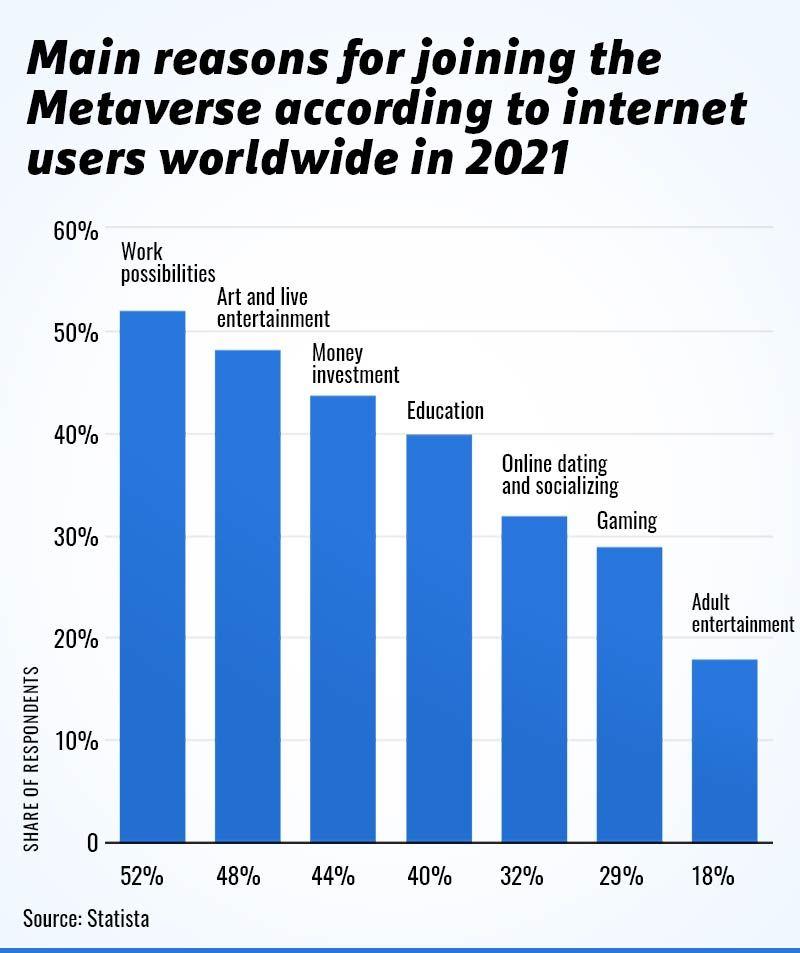
How do I join Metaverse? Can I make money?
Explore the new realm, where reality meets virtual — and how it will affect you
Alex Abraham, Senior Associate Editor ,Biju Mathew, Online Editor ,Jay Hilotin, Senior Assistant Editor ,Shyam A. Krishna, Senior Associate EditorandVijith Pulikkal, Assistant Product Manager
Metaverse is “meta” and “verse” joined together. “Meta” refers to a virtual world. One way to think about it is “metadata”, the unseen part of “header fields” of elements that go around on the web which are invisible to most web users, visible only to developers. “Verse” is short for “universe”.
It’s where your physical persona and your digital persona become a unified reality. What happens in one affects the other — and vice versa. It’s not a movie, rather, it’s an enhanced game that also borders on reality.
Okay, that doesn’t sound very helpful. And it’s understandable — sort of like explaining what an app is to someone who only knows only email until then. Metaverse is still a rather vague term. And the technology is not yet commonplace.
We break it down for you:
So what is Metaverse anyway?
In general, the Metaverse can be used interchangeably with cyberspace — the meaning won't substantially change 90 per cent of the time.
The term doesn't really refer to any one specific type of technology. Instead, it’s seen as a broad shift in how people interact with technology.
In a nutshell, a “Metaverse" refers to the next-generation internet, a step higher from the 2D realm. Metaverse is decidedly 3D. More specifically, it is a network of 3D virtual worlds focused on social connections.
It fuses reality and virtual reality together. At the moment, it’s seen as a hobbyist’s domain. The gear to experience Metaverse is quite pricey — about $400 for a set of VR goggles and consoles. But the community is about to explode.
What makes Metaverse compelling?
There’s no compulsion; just attraction. There’s also some fascination among people already immersed in this domain. Today’s children, known as “digital natives” are naturally drawn to it, almost by default.
“I like VR. It has a ‘rec room’, and many fun games. Though right now, I like my XBox more,” said Toffee, an 8-year-old Dubai-born boy.
Metaverse is often described as “immersive internet” using a single, universal virtual world facilitated by the use of VR and AR headsets.
Is there money in it?
While some are in the Meta world purely to make money, others join for entertainment or education. The extent and reach of both these activities are not completely known as the Meta world is still in its nascent stage.
While Metaverse is new for some, it’s already the “in” thing for many. There are diverse reasons for joining — the lure of making money is the key driver.
For entities and companies involved in its development, the stakes are high. In 2020, it is estimated that the global Metaverse market size reached $47.69 billion; it is expected to register a revenue compounded annual growth rate (CAGR) of 43.3 per cent till 2028.
According to a Statista survey, some of the reasons people join the Metaverse include work possibilities, art and live entertainment, money and investment, education, online education and socialising, gaming and adult entertainment.
How does technology facilitate the Metaverse?
Metaverse is a product of the times. Times when technological advances have provided the crucible for creating a collective virtual space.

Virtual Reality (VR) and Augmented Reality (AR) have become a part of our lives — initially through video games and online shopping experiences.
High-speed internet, super-fast computer processors and “peripherals” have dramatically enhanced our digital experience.
More innovations like 5G, head-mounted displays (HMDs), AR cloud, the Internet of Things (IoT) and spatial technologies are driving the race towards Metaverse.
However, there’s one game-changer: the fast spread of a robust internet infrastructure.
12.3m
estimated number of people who tuned in to a VR concert in Fortnite featuring Travis ScottIt allows large numbers of people to gather in virtual environments, according to the Association of Talent Development, which points out that more than 12.3 million players tuned in for a VR concert in Fortnite featuring Travis Scott.
Blockchain technology and 3D virtual reality platforms have given Metaverse such a fillip that industry experts are betting that 25 per cent of the world’s population will spend at least an hour every day on this virtual world. These technologies enable e-commerce, immersive virtual social experience and learning.
Virtual reality headsets like Meta’s Oculus and Microsoft’s HoloLens are already there. Apple, HTC, Pico, MagicLeap, and others are reportedly developing hardware platforms while scaled-up server infrastructure help render realistic virtual environments and avatars in 3D.
How do you join a Metaverse? What do you need?
Are you interested in a sneak peak of the Metaverse, or the full experience? For the former, a smartphone is enough. But you will be missing much of the meta experience.
For the full experience you would want to consider buying a Virtual Reality (VR) headset or a pair of Augmented Reality (AR) smart glasses. Picking the right VR headset is perhaps one of the most important factors that are likely to make or break your experience
Using a VR headset will allow you to fully immerse yourself in the Metaverse and obtain a true sensation of presence. You'll be able to converse with others through your selected avatar and activate all your senses, depending on the headset you have.
-Demand for VR headsets has grown over the past few years. Grandview Research project the global virtual reality headset market size stood at $7.81 billion in 2020, and will grow at a compound annual growth rate (CAGR) of 28.2 per cent in the next 7 years to 2028. A key driver for this growth: the military and automotive sectors.
Dh1,250
typical price of a Virtual Reality set Enter the Metaverse1.Use Virtual Reality. One option is to use the Oculus Quest headset is an option. You can also do it using a smartphone and VR apps or YouTube 360 videos.2.Play video games. These online games resemble Metaverse or a part of it. Players can create avatars and traverse the digital world in video games.3.Attend a virtual concert or fashion show. They offer immersive experiences. All you need to do is to log in through a browser to attend these shows.4.Cryptocurrencies. Using cryptocurrencies in the real world brings you closer to Metaworld. You could also buy digital assets of NFTs.5.Join Metaverse platforms. Platforms like Decentraland or a game like The Sandbox will allow for an immersive experience. You can join for free.Who all are in the Meta world?
Metaverse is not on one single platform, it depends on the complex digital environment, including infrastructure (connectivity technologies), human interface (VR headsets etc), spatial computing (3D visualisation)
Though Facebook kicked it off, other companies like Apple, Epic Games (the company behind the immersive game Fortnite), Niantic, Microsoft, Decentraland are taking it forward.
What are the benefits of Metaverse?
Metaverse can improve communications, where users can experience an engaging and interactive world, with 3D virtual environments. Virtual offices and classrooms can provide a 360-degree view and digital avatars to interact with. Also, it provides new avenues for branding and marketing, offering targeted audiences. Digital currency and gaming will also have a new lease of life with virtual platforms.
However, it all depends on a fast internet connection.
Disadvantages?
As the rules of engagement are evolving, there are fears of people misusing it for bullying and abuse. The thin line between privacy and security, public and private blurs, cutting the difference between real and virtual.
Chances of addiction and withdrawal from the real world is serious concern.
Is Metaverse here to stay?
Internet development can be divided into “eras”, or periods. The initial development, in the 1960s to 70s, the internet was mostly text-based. It was followed by Read-Only web, then came Social (read-write) Web, followed by the Semantic Web (read-write-execute).
Metaverse is expected form part of the "Social Web" era and onwards.
We're in the era of mobile web, before the so-called Web3 (decentralised, blockchain-based internet), before another layers comes, the so-called intelligent / emotional (symbiotic) Web.
Glossary of terms for 'Metazens'
DAOs: Decentralised autonomous organisations (DAOs) are community-led digital organisations that run on blockchain technology.
Decentralisation: Distribution of ownership — the idea that the Metaverse will not be regulated or run by a single corporation or individual.
Digital twins: Physical spaces that have been cloned in the virtual world to promote familiarity and efficiency.
Extended reality: An umbrella term encompassing augmented, virtual and mixed realities.
OP: Short for “overpowered”, referring to a player who is far more skilled than their competition or an extremely dominant character.
Interoperability: The ability for virtual experiences, possessions and identities to travel unchanged across platforms.
Liminal spaces: A new generation of gathering spaces and event locales that incorporate both physical and virtual elements.
NFT: Non-fungible tokens (NFTs) are digital certificates of authenticity that will form the basis of digital ownership.
Persistence: A continuity of existence; the continuation of virtual life regardless of whether people are online or offline.
Virtual teleportation: A new technologically enabled form of travel or collaboration that uses multi-sensory and photorealistic renderings to make you feel as if you’re in the same room as someone who could be halfway around the (physical) world.
Web3: A decentralised, blockchain-based internet that will enable a seamless fusion of virtual and physical life.
}})